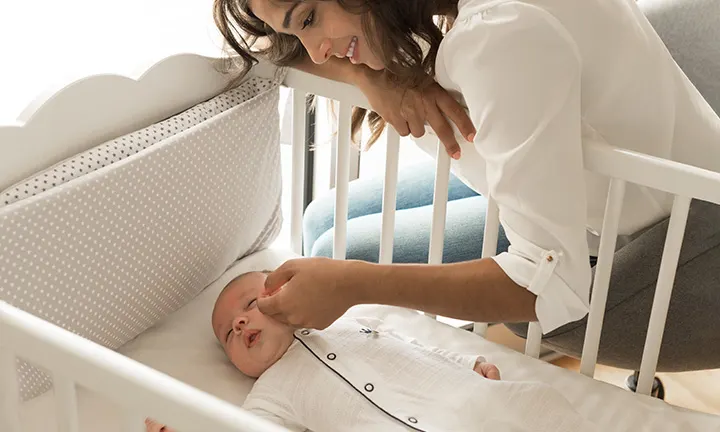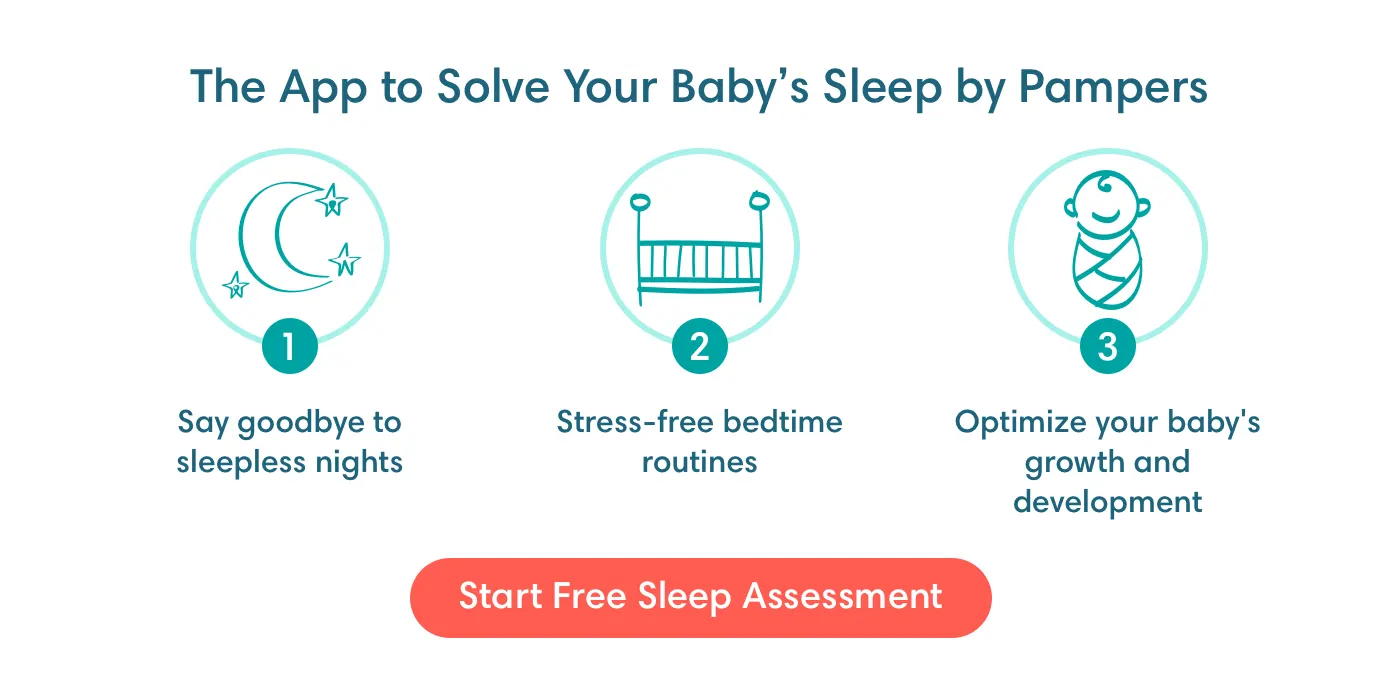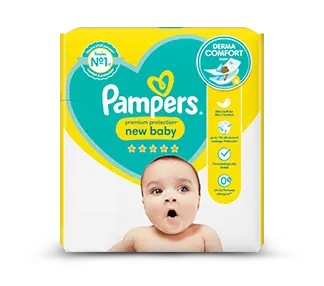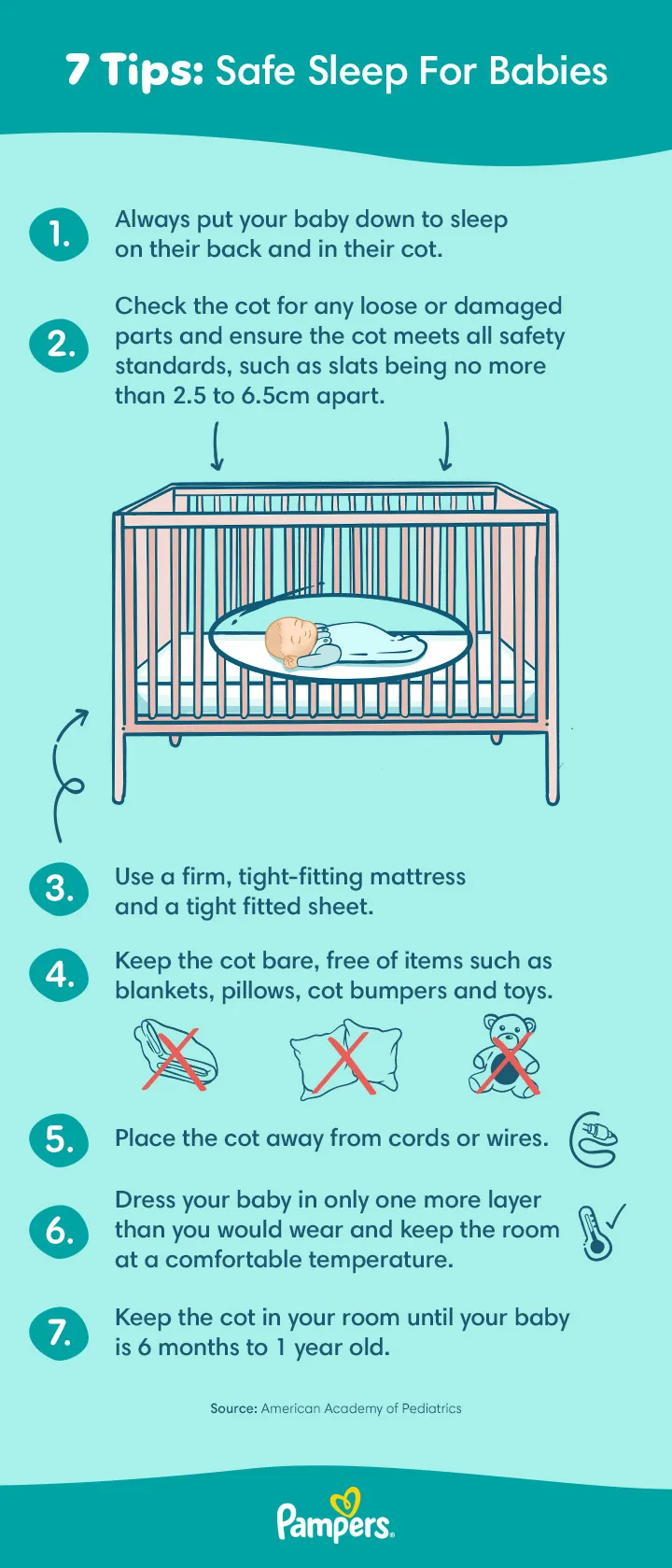Safe Sleeping Guide for Infants
Do you put your baby to sleep at night and then worry about their safety? Do you put your ear close to their head to check their breathing? These worries are natural for every parent, and there are many things that you can do to keep your little one safe when they’re sleeping and put your mind at rest, too. Read on to find out more.
Promoting Safe Sleep for Babies
When you put your little one to bed, you want to know that they are going to sleep in a safe, comfortable place. You want to be able to relax too, as looking after a young baby can be a demanding time. Providing an environment that ensures safe sleep for babies is not a complicated or expensive affair – you don’t need to invest in the latest black-out blinds or white noise machine (unless you want to) – but there are a few things that you can do that will really make your baby’s environment a healthier and safer place.
Provide safe bedding. A fitted bottom sheet and light blankets are better than a thick duvet. Ensure that the cot mattress fits the bed tightly and is clean and firm. If it fits well, there is less chance of it being pulled up by your baby.
Keep blankets, fluffy bedding, pillows, stuffed toys and cot bumpers out of your little one's cot. Cot bumpers may sound like a nice idea but there is a risk that your baby could pull them down over themselves.
Keep breastfeeding if you can. Breastfed babies have significantly lower risk of SIDS (cot death) than formula-fed babies. Even breastfeeding for a short period of time offers your little one some protection. Giving your baby expressed breast milk also works, so you can still get some help with the night feeds.
Control the temperature around your baby ; dress your child lightly – keep them warm but not too warm. Babies do not need electric blankets, hot water bottles or being placed near a radiator to keep them warm.
Smoking in your baby's room is a big no – in fact, smoking should never happen anywhere near them. If you or members of your household do smoke, keep it outside the house.
Do not put your little one to sleep in bed with you – especially if you have drunk alcohol. The best safe sleeping place for your little one is in their own cot. You might roll over and suffocate them if you fall into a deep sleep. The same can be said if you have taken medication that may affect your sleep.
No toys or mobiles in cots for babies older than five months. Mobiles must be out of the reach of the baby when used.
The mattress should be set on the lowest level for babies who can pull up to stand. It is amazing how once your little one has learnt to stand up in their cot, they can stretch their arms out and pull down things that are within reach. An active baby will quickly learn to escape if the mattress is set too high, which might result in them falling out of the cot and hurting themselves.
Make sure that your baby’s cot is safe and sturdy. You do not have to buy new, but cot should comply with current safety guidelines.
Smart Sleep Coach Tip |
About SIDS (Sudden Infant Death Syndrome)
Let’s talk about the main worry – SIDS. Sudden infant death syndrome (also known as cot death) is a huge worry for parents, even though it actually only affects 0.27 percent of babies in the UK. Nobody really knows exactly what causes SIDS, although there are a number of factors that are known to increase the risk. The good news is that most of these factors can be either removed or reduced greatly by following some simple best practices.
There are some countries, namely Japan and the Netherlands, where SIDS is much less common. This has led experts to ask if cultural factors may play a part. One UK study suggested that SIDS could be lower in some cultures because of different attitudes to sleeping in the same room as your baby and lower levels of maternal smoking and drinking. Breastfed babies also fare better, even when the milk is expressed for them.
Another big factor in decreasing cot death is how your baby goes to sleep. This includes their sleeping position, the things they have around them in the cot and the temperature of the room. So although SIDS is still not fully understood, you can do a lot of things that will set your mind at ease when you put your baby down for their nap.
Did you know? In Finland, some babies sleep in cardboard boxes sent out by the government! They come complete with starter items to help new mothers, and some experts believe these little cardboard cots help promote some of the lowest infant mortality rates. |
The Best Safe Sleeping Position
To ensure a good, safe sleep for babies, the position that you lay them down in can make all the difference. Research suggests that it is not safe to lay your baby down on their tummy. The best position for a baby to sleep is on their back. This prevents their airways from becoming blocked and reduces the risk of them being suffocated. Even if you lay your little one on their side, they could roll back onto their stomach.
An older, more active baby will be able to roll themselves around and choose their own sleeping position, but for newborns, on their back is best. If you find that your younger baby has rolled onto their tummy, gently place them on their back again.
Feet to foot – where baby’s feet are at the bottom of their cot – will also help as it stops your child from wriggling down under the covers during sleep. If your little one is already at the bottom of the cot when you put them to bed, there aren’t many other places that they can go and the covers are more likely to stay where you want them – keeping your baby warm.
Other places where your little one can safely sleep:
A Moses basket – these little cots are really convenient to have downstairs with you so that you can keep an eye on your baby while they nap, allowing you to get things done with your baby nearby. You don’t need a Moses basket, but you might find one useful to have.
A sling – some babies love to be snuggled up with you, and some parents prefer to wear their baby while they’re out and about. Babies love the comfort of being close to someone and they can take a snooze while you are on the move. As long as your baby can breathe freely, a sling can be great for short naps.
A travel cot – really useful if you are away from home and still want the comfort and safety of a proper cot. Travel cots pack down, are great for grandparents and friends who might be helping to look after your baby, and you can get a second-hand one for not much money.
A pram with a firm, flat mattress is good if you are out and about for long periods of time. They are great if you are taking a young baby on walks and they need a sleep.
Handy tip Pushchairs and car seats, while okay for short journeys, are not the best places for safe sleeping. As soon as you can, transfer your baby from their stroller or seat and put them to bed in their cot. A pram with a flat, firm mattress is also okay. |
Help! Safe Sleeping Has Given My Baby a Flat Head
You might notice that your little one seems to have a flat head at the back – and this can be due to them spending a lot of time lying on their back. The medical term is ‘brachycephaly’ and it can look quite odd! But don’t worry: babies have soft skulls and having a flattened head is not a risk to their brain. Stick with the advice for safe sleep for babies and keep your baby on their back until they are ready to roll over themselves. You can help things by giving them tummy time during the day, taking the pressure off the back of their head. A flat head should not be a cause for concern unless your baby is struggling to turn their head, in which case, speak to your health visitor or GP and get them to have a look.
In summary Your baby should always go to sleep on their back until they reach an age where they are mobile enough to wriggle around and choose their own sleeping position. It is good practice to put your little one’s feet to the foot of their cot – this stops them from wriggling under the bedclothes. And don’t worry too much about that flat head! Plenty of tummy time will help until they’re ready to roll over themselves. |
FAQS AT A GLANCE
Lay your baby on their back in their cot. Do not use a duvet, cot bumpers or things that could fall and cover their head. Regulate the room temperature and place your baby’s feet to the foot of the cot.
The Bottom Line
There are lots of things that you can do to promote safe sleeping habits for your young baby. While every parent will worry to some degree about their baby while they are asleep, following some simple safe sleep guidelines can take much of that worry away. Sudden infant death syndrome is scary, but it is much rarer than you may think and you can make it even less of a possibility by providing a cot free of clutter in a room with an even temperature. Putting your little one to sleep on their back is the best thing that you can do to ensure a safe sleep. If you’re breastfeeding, it’s good to know that this also reduces the risk of SIDS. If you follow these few guidelines, they might just put your mind at rest – although you will probably still want to take a peek at your beautiful baby while they’re sleeping!
The information in this article is based on the expert advice found in trusted medical and government sources, such as the National Health Service (NHS). You can find a full list of sources used for this article below. The content on this page should not replace professional medical advice. Always consult medical professionals for full diagnosis and treatment.
Read more about Newborn Baby
Join Pampers Club and get:






